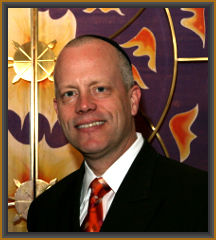
 |
April 26, 2024 - 18 Nisan 5784 Shabbat Chol HaMoed - History & the Haggadah
I hope you were able to enjoy meaningful Seders, earlier this week, and have been enjoying the Chag (holiday). We were thrilled to have offered you a virtual Seder on the first night of Pesach, as well as an in-person (sold out!) community Seder on the second night of the Yuntif (holiday). We thank Beth Gerson and David Isaak for providing a great experience for our online participants and we thank Craig, Gary, and Juan for all of their labors, which made the second night super successful. This Shabbat, we will join in the sanctuary at 10:00am for Shabbat services, as usual, and enjoy a Pesach repast featuring leftovers from our community Seder. The dinner was very good, so the Kiddush should be delicious! I also look forward to seeing you on Monday and Tuesday mornings, when we will hold services for the concluding days of Pesach. The services will begin at 10:00am and be followed by a Kiddush. Yizkor will take place on Tuesday, starting at about 10:45am. Recently, I was asked a probing question by a student in Israel, who inquired as to what the Seder actually looked like before the advent of the printing press. She was aware of illuminated manuscripts post-creation of the Gutenberg printing press (Germany 15th century), but was not sure how the Seder may have appeared prior to that epoch. I rephrased her question by suggesting that what she was really asking is, “Ma Nishtana” (How was that night different from all others?) For most of us, the versions of the Passover Haggadah we use almost always have pictorial illustrations (without which it would be a quite different and less exciting book). There are literally dozens of new Haggadot published each year, often reflecting a targeted theme. Haggadot produced in the Medieval period are known for being especially embellished with all sorts of illuminations as well as dramatic illustrations. But, even those traditions have different strands of interpretive styles, often depicting cultural norms. In the Middle Ages, when manuscript illumination was at its peak, there were two main schools of illustration. The German school tended to limit itself to depicting the Seder service: the family at Seder; the four sons; the ten plagues; the rabbis at Bnei Brak; and the hiding of the Afikomen. On the other hand, the Spanish School concentrated on Divine creation, depicting what took place on each of the first seven days of history. Apart from the flora and fauna, we see Adam and Eve establishing human history. We see the animals coming to Adam to receive their names. We see Eve emerging from the rib of Adam. Biblical heroes such as the patriarchs Moses, Aaron and David, were also depicted later in the history of Haggadic art. Furthermore, in Dutch Haggadot of pre-modern vintage, Moses looks like an Amsterdam burgher of the time of Rembrandt! As early as the times of the Mishna (clearly pre-printing press), there was, in fact, a template, but not a specific liturgical book, describing how the Jewish community celebrated the Passover. The Talmud in Messechet Pesachim shares some of the specifics as follows: The Shamash, or servant, mixed the wine with water and served it to the host, bringing in the Matzah, Hazeret (lettuce), and Haroset, and assisted with the dipping of the green vegetables. The poor person was invited to sit and recline and all were encouraged to drink four cups of wine. In Mishna 10:3, we learn of the eating of Haroset. Mishna 10:4 describes the asking of four questions (slightly different versions than ours) and the story of the five rabbis who stay up all night discussing the themes of the Seder. Mishna 10:5 mandates the explanation of the symbolic foods of the Pesach, Matzah, and Marror. Mishna 10:7 speaks of the singing of songs towards the end of the evening (Birkat Hashir), while Mishna 10:8 dictates the final consumption of the Afikomen as dessert. As an extension of the singing (Mishna 10:7), here are some historical highlights to famous Seder compositions that you recently sang (even if off key):
Finally, numerous scholars have suggested that the entire Seder experience represented the acculturation by the Jews of the Greek symposium meal. The Sages absorbed the form of the symposium from the Hellenistic world, but drastically changed its content. The Greeks and Romans discussed love, beauty, food, and drink at the symposium, while the Sages, at the Seder, discussed the Exodus from Egypt, the miracles of God, and the greatness of the Redemption. Tellingly, the symposium was meant for the elite, but the Sages turned the Seder into an educational experience for the entire Jewish people. I hope that this brief investigation into the history of the retelling of our people’s history through the Haggadah adds to your Passover celebration and helps to make it more meaningful and interesting! As we enter Shabbat, I pray that the next chapter of the telling of our Passover story will feature the themes of peace, return, redemption, joy and Torah. Shabbat Shalom and Chag Sameach, Rabbi Eric L. Wasser, EdD, Hon.DM
|